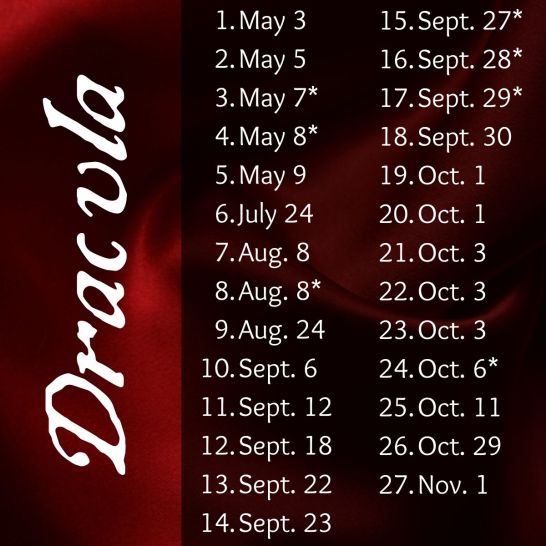Today Is the Perfect Day to Start Reading Bram Stoker’s ‘Dracula’—No, Really. It’s Canon.
Sink your teeth into this once-a-year opportunity.

If you’ve always wanted to read the story of Dracula but only really think about it around Halloween or in times of vampire fervor (like any season of What We Do In The Shadows), you’re in luck. Today is May 3, meaning that if you read the first chapter and read each proceeding chapter with the corresponding date, you can read the book in real-time. Bram Stoker’s Dracula is an epistolary novel in which readers are presented with different first- and second-person sources that, when read together, tell the story. Other popular epistolary books (across genres and settings) include The Perks of Being a Wallflower by Stephen Chbosky, The Martian by Andrew Weir, and Dear Haiti, Love Elaine by Maritza Moulite.
Stoker’s influence on the epistolary
While we’ve learning about the past through correspondence (sometimes spicy, but often pretty boring) for centuries, if not longer, the novel part implies made-up elements. According to English Literature Professor Evan Gottlieb, the first epistolary novel in English was Love Letters Between a Nobleman and His Sister in 1684. Loosely based on a real Lord and his sister-in-law in a scandal in 1962 London, the anonymous story being written as intimate letters made it seem more authentic (and, in this case, salacious) to readers. The style almost adds an implied neutral narrator handing you the sources. Two centuries later, Bram Stoker would contribute to this tradition with Dracula.
In addition to letters, Stoker includes fictitious diary entries, telegrams, newspaper accounts, and memos. At the time, doctors and some scientists began recording notes (dictations) using phonograph cylinders, so Stoker also included these. He wasn’t the first to mix in many mediums, but the telegraph and (especially) phonograph were super new technologies at this time. Gottlieb wrote:
“The result is not just polyvocal and multimedia but also effectively suspenseful, since the reader, being privy to all of the novel’s materials, frequently knows more than any single character and can see what is happening or is going to happen more clearly than they. Stoker, in other words, uses the epistolary form to maximize Gothic terror and suspense.”
How to read in theme
There are two methods to following this. You can read each of the 27 chapters to its closest start date, or ignore the chapters entirely and just follow the dates. Some parts will be out of order for creative and story-building reasons, but you will still start in May and end November 1–10, no matter what choice you make. I’ve made this graphic as a general guide for the first method. The asterisked dates are not as strict, as long as you read the chapters in order and between the solid, previous chapters.

If you need a little reminder, the Substack newsletter, Dracula Daily, will send out the story each time something happens in the novel. From May 3 to November 10, you’ll receive an email with a part of the novel in the timeline things happen. This alters the experience a bit but can still be an exciting option if you are one to keep up with emails! If you miss a day, you can catch up alone or read Dracula Daily’s archive. In 2009, Blogspot user Whitney Sorrow used the RSS feed for a similar book community event.
@allyzinnia #booktok #horrorbooktok ♬ Horror atmosphere piano & SE. – Kohrogi
If you want to pick up a copy, check it out on Bookshop, but also, the book is in the public domain and a common find in most libraries. (I don’t suggest hogging it for almost five months, though!) Many dramatic readings are free for audiobook lovers online, including on LibriVox. I own the Norton Critical Edition (edited by Nina Auerbach and David J. Skal) as I read it for a class a few years back, but I still recommend that edition because it has footnotes to help with the 19th-century references.
(via TikTok, image: Universal Pictures)
The Mary Sue may earn an affiliate commission on products and services purchased through links.
—The Mary Sue has a strict comment policy that forbids, but is not limited to, personal insults toward anyone, hate speech, and trolling.—
Have a tip we should know? [email protected]
